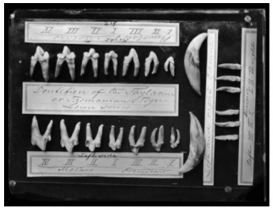My project explores the unnaturally dominant place of natural history knowledge and practice in Australian settler-colonial science, politics, and history. I do this by studying colonial-era natural history museums as the nineteenth-century’s dominant public expression and materialization of Nature in Australia. Alongside its collections, galleries and stores, the natural history museum’s mission and its knowledge structures, governance, and systems were deliberately made and continually refined through the colonial era in settler contexts. The processes and negotiations that produced these colonial museums were not natural, but archival. As their extensive and well-kept contemporary archival collections attest, Australia’s museums were unusually interested in constructing, ordering, and keeping not just their scientific knowledge and animal and cultural collections, but also their own histories.
This project will untangle the museum-as-archive and its socio-material legacies in Australian environments, politics and beyond through two story threads, both Berlin-based. The first looks at Australian mammal collections and their documentation at the MfN in Berlin. The second works with the remains of a large field-library that travelled with a German scientific team to the Murray River in SE Australia in 1857 and is now held at the Staatsbibliothek in Berlin. These two case studies will contribute to my larger drive to understand colonial natural history as a knowledge system and political-social network that continues to structure, scale and translate relationships among individuals, communities, nations and animal-things in specific national contexts and in the orders of global science. Both studies can also demonstrate the insufficiencies and possibilities of scientific encounters with other ways of knowing, living, and being in colonial – and contemporary – Australia and beyond.

